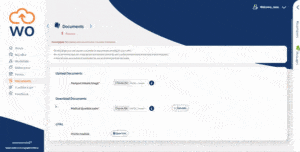Confusion over roles in the process is one of the common problems that HR and Recruitment experience with employee onboarding.
This is certainly the case when dividing up responsibility between HR and the hiring managers of the team.
The line manager needs to be part of the process and, without ‘joined-up thinking’, it leads to messy and slow handling of new hires.
What’s the problem?
For onboarding to be effective there needs to be a clear roadmap of who does what and when. It should be a joint effort, with HR working with hiring managers to ensure a fast and smooth process.
This is easier said than done, the problems include:
Flexibility
Onboarding duties will differ depending on how a business has set up their roles. Any ‘one-size-fits-all’ approach is rarely suitable.
For example; a hiring manager could be involved at every step if the role is for a senior executive; and for a low-skilled position, it might be left to HR.
Communication
Hiring managers are often based separately to a central HR team – whether that’s in a branch or working remotely. This makes communication difficult, requiring constant calls, emails and sharing of documents.
New hires take longer to get started when there is poor internal communication. It also increases the risk of mistakes and errors being made. You see this when a manager is unaware of a new hire’s start date and not everything is ready on time.
Experience
A manager or team leader may have played a crucial role in a candidate accepting a role. During the interviewing phase, they have built a connection with the incoming hire.
When a manager disappears from the process during onboarding with all contact handed to HR it is confusing for candidates. With it often taking weeks for onboarding to be completed, it increases the risks of applicants exploring alternatives.
How to better handle onboarding responsibilities
The main barrier that prevents HR and hiring managers from working effectively together is a disjointed admin process. This is why digital technology is providing so effective at improving team collaboration.
Tasks can be managed in one place and documents can be shared across an organisation with a cloud-based onboarding system. It allows a hiring manager to see real-time information on exactly who needs to do what.
They can quickly approve start dates, personalise communications and tackle any issues or uncertainties that a candidate may have. It’s an effective way to improve engagement and lower dropout rates.
Overall onboarding roles and responsibilities can also be modified for different kinds of hiring requirements. It removes the limitations of having a rigid structure and allows hiring managers to accept a more integrated role.
Benefits shared by recruiters
These same benefits apply to everyone who’s involved in the onboarding process, including recruiters. The flexibility of cloud-based onboarding changes the way that recruitment teams are a part of the onboarding process.




